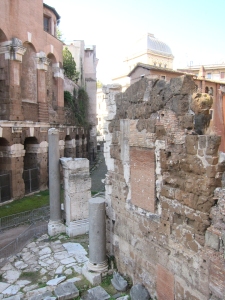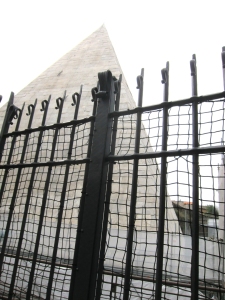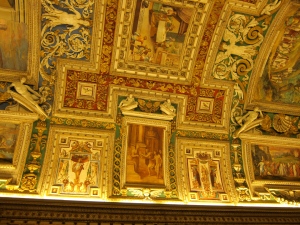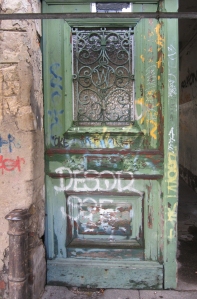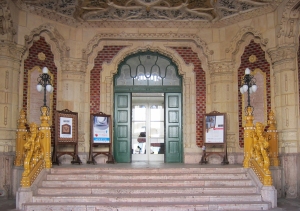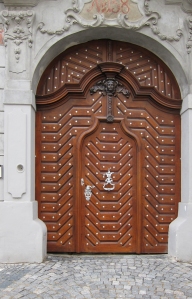You are currently browsing the tag archive for the ‘architecture’ tag.
The first destination on our trip was Rome. I wasn’t sure what to expect especially because several friends had described Rome as one of their favorite cities. It wasn’t mine.
Instead, I found Rome to be confusing and chaotic. I felt overwhelmed by the sheer number of museums and sights and found it hard to decide what to see in the 3 days we had in the city.
Despite that initial reaction, there were many things I found intriguing about Rome, and in the end, I was glad that I had gone. As in most of the other places I visited, I liked the conviviality and sense of community that was evident everywhere. It wasn’t unusual to be in a small restaurant or cafe and have a person pop in to have a conversation with someone working in the restaurant. It was also a common sight to see people hanging out in cafes and bars, enjoying the company of their friends. This was particularly true of elderly residents who seemed to spend hours in their favorite cafe.
The neighborhood we stayed in, Trastevere, had once been a working class section of Rome. Now it was full of little trattorias and and nightlife destinations. The area was very charming, and our apartment looked out onto a small cobblestone street. Trastevere was also close to the Tiber river, a very beautiful destination especially at night.
Another interesting aspect of Rome was that on almost every corner, there was something of artistic or historical interest. One day, after walking through the old Jewish ghetto areas, we came upon what I believe are the ruins of the Teatro di Marcello, originally planned by Julius Caesar around 12 BC. On top of the ruins, a palace was built in the 16th century. As I photographed these ruins, two women came along with their shopping bags, not paying any attention to what was clearly a commonplace sight for them.
On another day, we visited a food market in Testaccio, once the meat packing district of Rome. The market itself was not very exciting compared to some of the markets we later visited in other cities. It was set inside a modern building on a small side street. But on the walk to the market, we passed many small shops selling interesting food and household items. Testaccio, a pleasant neighborhood, has now become somewhat trendy. Several of the well known restaurants serve varieties of offal, in accordance with the neighborhood tradition of butchers bringing home whatever was left at the end of the day. Testaccio also houses a foodie delicatessen, Gastronomia Volpetti. We bought sandwiches there, and the man behind the counter separately weighed every item that went into the sandwich including the bread and the roasted peppers.
One of the historical sights in Testaccio is the Pyramid of Cestius, dating from 12BC. It now situated alongside a busy street and would look completely out of place in this modern context if you weren’t in Rome!
Just past the Pyramid is a metro station from which you can catch a public bus to the Appian Way. Having read about the Appian Way as the first road on which Roman troops began their marches outside the city, I had no idea what it would look like in its modern incarnation.
The road is cobblestoned and very narrow and is bordered by high stone walls. The bus that travels the Appian Way lets people off at several catacomb stops along the road. It’s possible to tour those catacombs. There is also a beautiful pedestrian path parallel to the Appian Way which we walked along for some distance before catching another city bus back to the Metro station.
On our last day in Rome, we visited the Vatican Museum. We were lucky to be able to do so on a Friday evening when the museum was much less crowded than during the day. It is hard to describe the treasures found in this museum. In every room, there was something of interest, though after awhile, it became hard to take in the innumerable sights because there were so many.
The walk through the museum follows a specific path, from which you cannot deviate, winding in and out of many rooms, and up and down lots and lots of stairs. It culminates in the Sistine Chapel. My favorite images in the museum were in one of the galleries near the end of the tour. I liked their sense of whimsey and lightheartedness which was a change from some of more serious art depicted elsewhere.
The museum also houses a section of contemporary art, including a piece by the Ghanian artist El Anatsui.
Doors are endlessly fascinating to me. They represent points of transition between inside and outside. They hide secrets and offer privacy but are also portals to new worlds and opportunities. At their worst, they imprison.
Doors can be plain and functional or fancy and extraordinarily beautiful. In some places, doors and high walls hide courtyards filled with flowers, trees and birds. You would never guess, until you opened the door, what was behind it.
Doors also serve as metaphors. They are variously described as “windows to the soul”, “doors of opportunity”, the link between the past and the future, as in “when one door closes, another will open”.
On a trip to Central Europe a few years ago, I took many photographs of doors. Below is a sample from Berlin, Prague and Budapest. These doors, particularly, invite speculation: Who lived behind those doors? What were their lives like? What history has played out in front of these doors? Who witnessed it?




